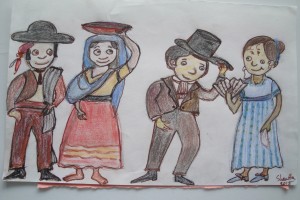During revolutions, we usually hear the about the heroic efforts made by individual men or about the grandiose goals that these men have for the revolution, but in the stories of Carutcho, we learn of these men made famous by the revolution who are not in any way special. What these short stories truly do is humanize the men of the revolution, not just specifically the men of Villa or of the Federales we learn about the human elements of all men and women involved in the revolution. Much like we talked about last week in class in regards to Pancho Villa being portrayed as a mythical beast who without the revolution would have failed, the short stories work past the imaginaries of the battlefield and focus more on the human elements outside of the battles and conflicts. The interactions that Nellie had with both soldiers and men alike, both through stories or real life interactions shows us the humanity in the revolution. In both the stories of the lives of individuals to their deaths, we learn how they lived their lives or why they were killed. Some even killed too soon, but it is through the lives and deaths of those during the revolution that we not only learn of the ideologies of the revolution but of the humanity of the revolution.
One of the stories that stuck with me the most was of Nacha Ceniceros, one of the few female generals in the Villa army who supposedly got executed only to have run away from the revolution in order to rebuild her life away from it all. This story about someone re-establishing their lives during the revolution is rare like we mentioned last week in the Underdogs, most people who join the revolution cannot leave the revolution once they join they are forever stuck in a perpetual motion like a stone rolling down a hill. The notability that Nacha was able to forge for herself in an almost man driven revolution is noted in her story, even at the end when she states herself that if she truly wanted she could have stayed in the army and marry one of the generals. It is her ability to give up becoming one fo the “most influential women” of the revolution to become a rancher instead. Although she is given a fake story to cover up her departure from the army, the fake story maintain’s her prowess and significance as both a general and a woman. The symbolism of the way that she died and many other died who infront of gun squads on both sides of the revolution is immortalized in these short stories. Deaths which otherwise may have gone completely unheard of as are those in many other revolutions.



